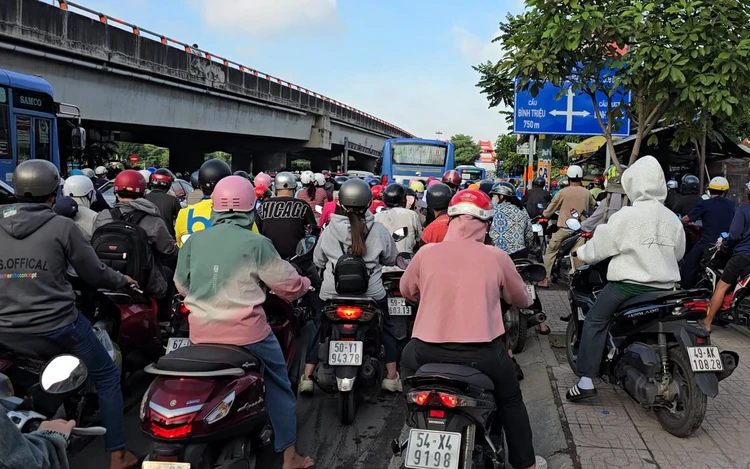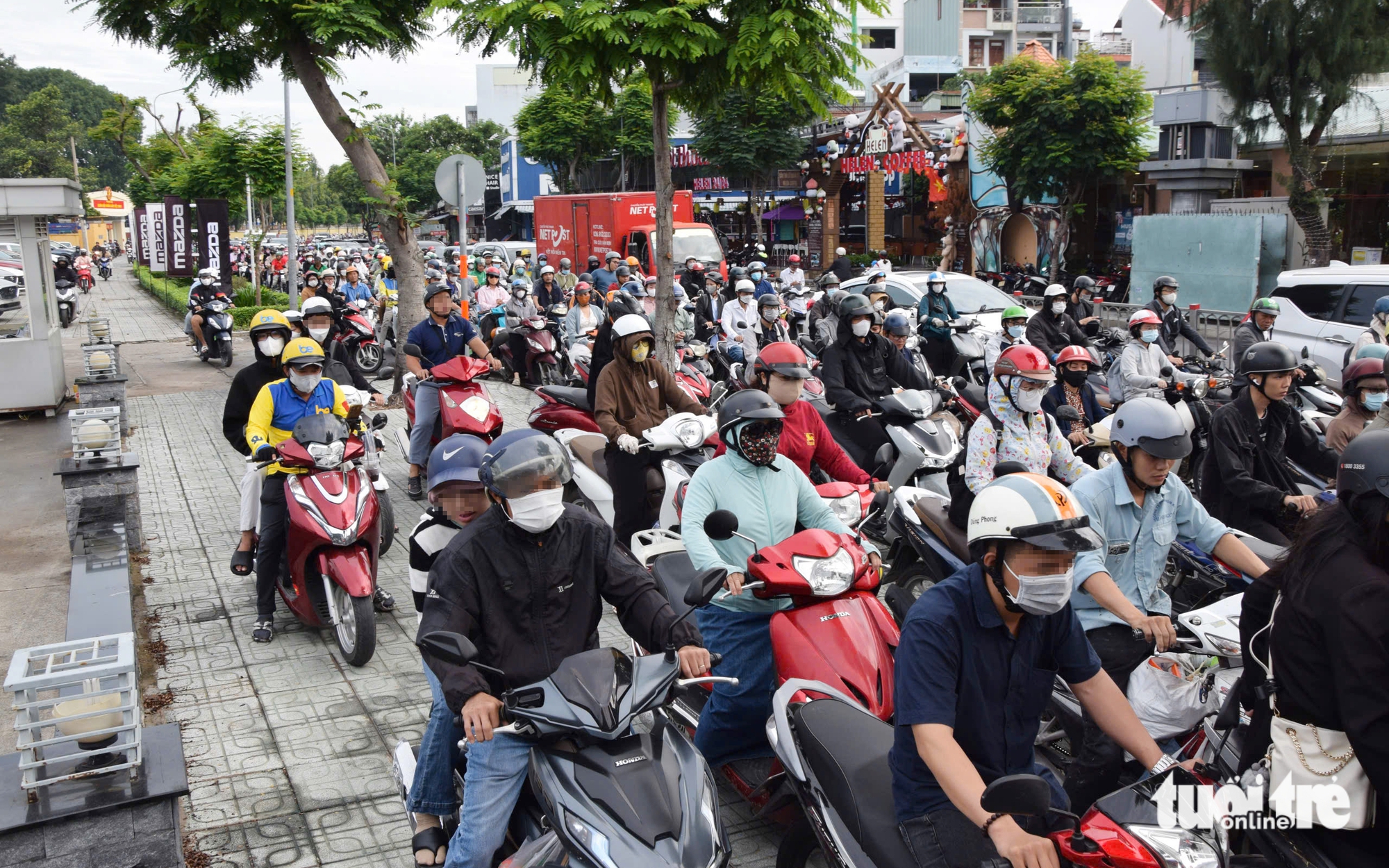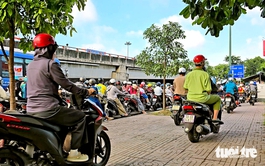
Motorcyclists ride on the sidewalk to bypass traffic on Pham Van Dong Boulevard in Ho Chi Minh City, ahead of others waiting at a red light, October 7, 2025. Photo: Minh Hoa / Tuoi Tre
A recent article in Tuoi Tre News highlighted the consideration by Ho Chi Minh City’s authorities to impose community service as a form of punishment for perpetrators of the driving offense of riding on the footpath.
For many community members, it is considered a welcome method to reduce motorbikes on sidewalks, whilst others see it as an overreaction to a problem that has much deeper roots than just lazy people not caring about the laws.
The way a law operates in any country is basically the same. The government of a country or state identifies a need in the community. In order for that need to be met, they must make sure everyone follows the same process. Whether it is buying a house, selling alcohol, or riding a motorbike, the laws are in place for everyone to understand and follow in the same way.
And over the past decades, in relation to driving offenses—including riding on the sidewalk—community members have continued to totally disregard this community standard. Even after the introduction of massive fines, some as much as two or three months’ salary of a factory worker, the problem retracted for a few weeks then returned to the same situation it has been for decades. It appears fines don’t seem to change this issue.
I challenged the question of why this continues to happen and turned to my own experience. At 6:43 am last Thursday, I was riding to work on a major road near an industrial park in Thu Duc. The road has two lanes for trucks and cars and a single lane, isolated by concrete barriers, for motorbikes.
As I approached a traffic light, I was stopped by three cars sitting in the bike lane. At this traffic light, motorcycles are permitted to continue straight through the red light because they have a green signal, but cars must stop. These three cars stopped around 70 motorbikes from getting through the intersection.
What made it worse was the road was flooded, and stopping meant most riders ended up with wet and muddy shoes. Also, the traffic jam meant that the cars were not moving on the green light. The only option was to ride on the sidewalk for about 40 to 50 meters to get around the cars and continue along the motorcycle lane on the major road.
I asked myself: What other options did I have? Is sitting behind a car—illegally using a motorcycle lane in this case—for 10 or 15 minutes a logical answer to the issue? I would have been late for work if I had complied with the laws, and the buildup of traffic, if everyone followed the law, would have meant total gridlock.
This story is just one small example, and we are all aware that some people selfishly ride on sidewalks in order to take the easy option. However, the traffic and road systems in Ho Chi Minh City have evolved over decades, and this has been the true root cause of what we have today.
Roads were designed 30 to 60 years ago and had little consideration for cars, motorbikes, and other large vehicles. Now we are pushing thousands of motorbikes into small spaces at the same time, and there is simply nowhere to go. Add to this cars that seem to get into a street and not go anywhere, and the system is broken.
Adding community service as a penalty will not fix this situation. A mother trying to get her children to school on time will continue to try to get down a small road by riding along the sidewalk. A motorbike taxi, desperate for work, will continue to use the sidewalk to escape the traffic and get to his next passenger. And when it is hot or raining, people will totally disregard the rules for their personal safety.
Rather than placing penalties on the victims of this traffic imbalance, we should be looking at options to give opportunity to local commuters. Closing local roads to cars is a start. The city was never designed for a gaggle of cars to be using small local roads, and until we reduce the number, we will never reduce the sidewalk issue.
Reducing parking opportunities in the city is another great way to reduce the amount of unnecessary traffic. It is harsh, but at some point we need to make the change to alter the makeup of the people using the road. If there is a different number of vehicles and a different mix, there will be different habits by commuters.
I apply a simple theory to the issue of motorbikes riding on the sidewalk. It didn’t happen decades ago because people walked short distances. People didn’t have cars in the city. People found a way to live using bicycles and public transport. Sometimes, we need to look at the past to be able to design a better future.
So, instead of increasing fines that include community service for sidewalk riders, let’s close the streets for cars so people don't have to use the sidewalks.
You never see a million-dollar car using a sidewalk. This is an issue of the working class, and to place more pressure and stress on those most in need, in my opinion, does nothing to resolve the issue.
My theory is all about starting at the center of the issue and not trying to change the problem at the fringe. If we make big changes at the core of this issue, then the sidewalk riders problem will fix itself over time. I might be simplifying this a bit, but I understand the laborers of Ho Chi Minh City, and I know they work hard and try their best to do the right thing.
There must be a better solution than taking people away from home and work as a penalty for riding on the sidewalk.





Max: 1500 characters
There are no comments yet. Be the first to comment.